Located between Palazzo Pitti, Porta Romana and Forte Belvedere, the Boboli Gardens are among the most grandiose and elegant gardens in all of Italy: over 45,000 square meters of real historical riches and sublime views of the city of Florence (especially from their highest point, the Kaffeehaus terrace).
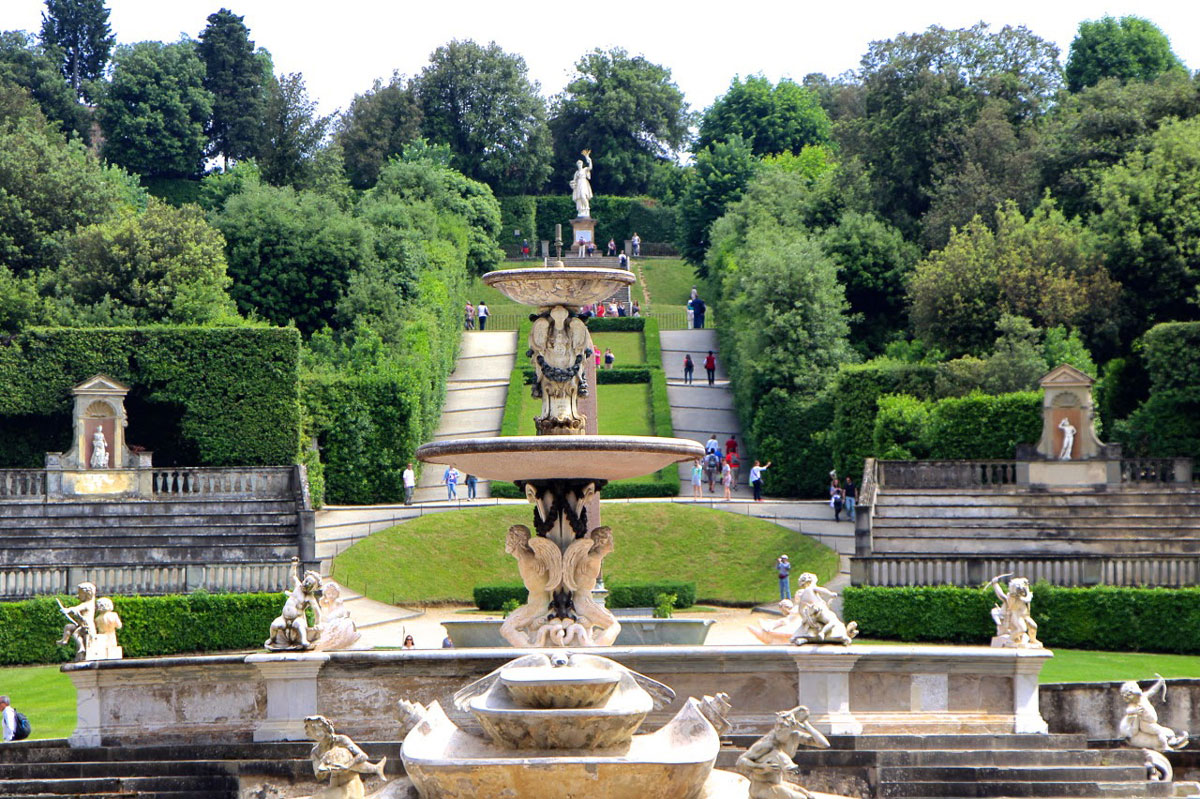
During a future visit (at the moment due to the pandemic, the gardens are closed), you will find many statues, fountains, walks but also caves, all created by different architects: practically an extraordinary open-air museum.
Boboli Garden: a bit of history
 The Gardens of Boboli (the origin of the name is not certain) were built over four centuries and were born from the vegetable gardens behind Santa Felicita in Oltrarno: the latter belonged to the Borgolo family and were purchased in 1418 by Luca Pitti; he commissioned the construction of Palazzo Pitti, the work of Luca Fancelli who involved his illustrious master Filippo Brunelleschi in the project.
The Gardens of Boboli (the origin of the name is not certain) were built over four centuries and were born from the vegetable gardens behind Santa Felicita in Oltrarno: the latter belonged to the Borgolo family and were purchased in 1418 by Luca Pitti; he commissioned the construction of Palazzo Pitti, the work of Luca Fancelli who involved his illustrious master Filippo Brunelleschi in the project.
Less than 100 years later, Eleanor of Toledo, wife of Cosimo de Medici,bought the property that became the family's residence.
The garden is the natural continuation of Palazzo Pitti: the two "wings" of the courtyard serve as a link between the Palace and Boboli himself.
A garden for the aristocracy
Conceived as a noble space, it marked and represented the distance between the Medici court and the Florentine people. The gardens were home to glitzy festivals, open only to the aristocracy of the time; the hilly location of boboli garden, its vegetation, caves, statues and many fountains create an unforgettable atmosphere.
The garden is the work of Niccolò Tribolo architect and sculptor, among the protagonists of the artistic current called Mannerism; but in addition to him The Garden of Boboli owes its uniqueness to three other men: Bartolomeo Ammanati, Giorgio Vasari and Bernardo Buontalenti. Each in their area of expertise, they shaped the landscape, created the famous caves and carved wonderful statues.
The Fountain of the Ocean
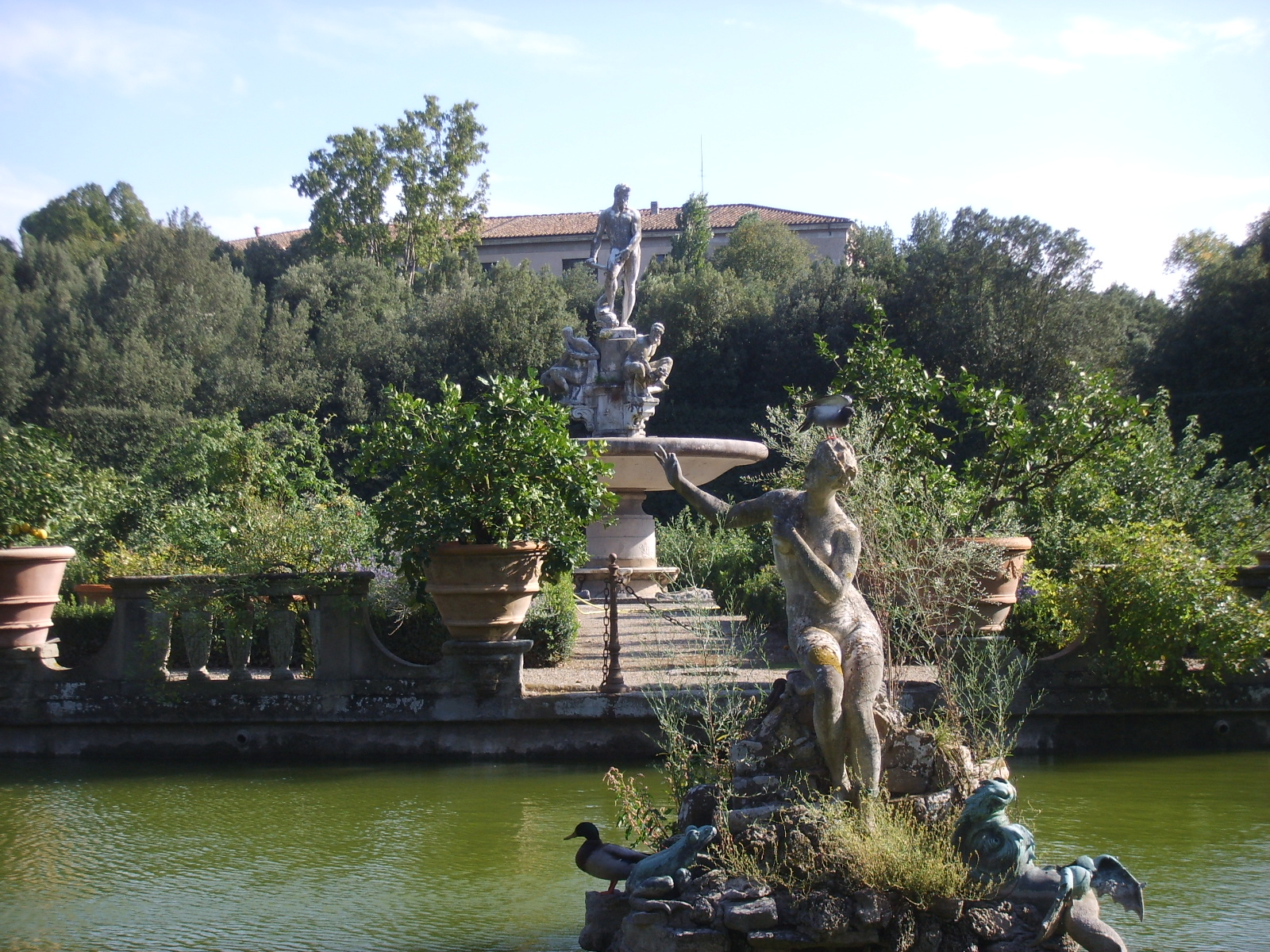
The Fountain of the Ocean,the work of Giambologna,was formerly in the center ofthe Garden of the Amphitheater (near the courtyard of the Palace), but was later moved to allow the use of the amphitheater as a space dedicated to shows.
It consists of a large tank; in the center of the conca, the island is surrounded by a stone balustrade, behind which we find citrus vases and the splendid sculptures of Giambologna. In the center, the statue of Neptune surrounded by the lying gods representing the Nile, the Ganges and the Euphrates, who pour their waters into the great tank, the ocean precisely. From the water emerge some groups of marble (Perseus on horseback and Andromeda) creating an incredibly suggestive set.
Bacchino Fountain
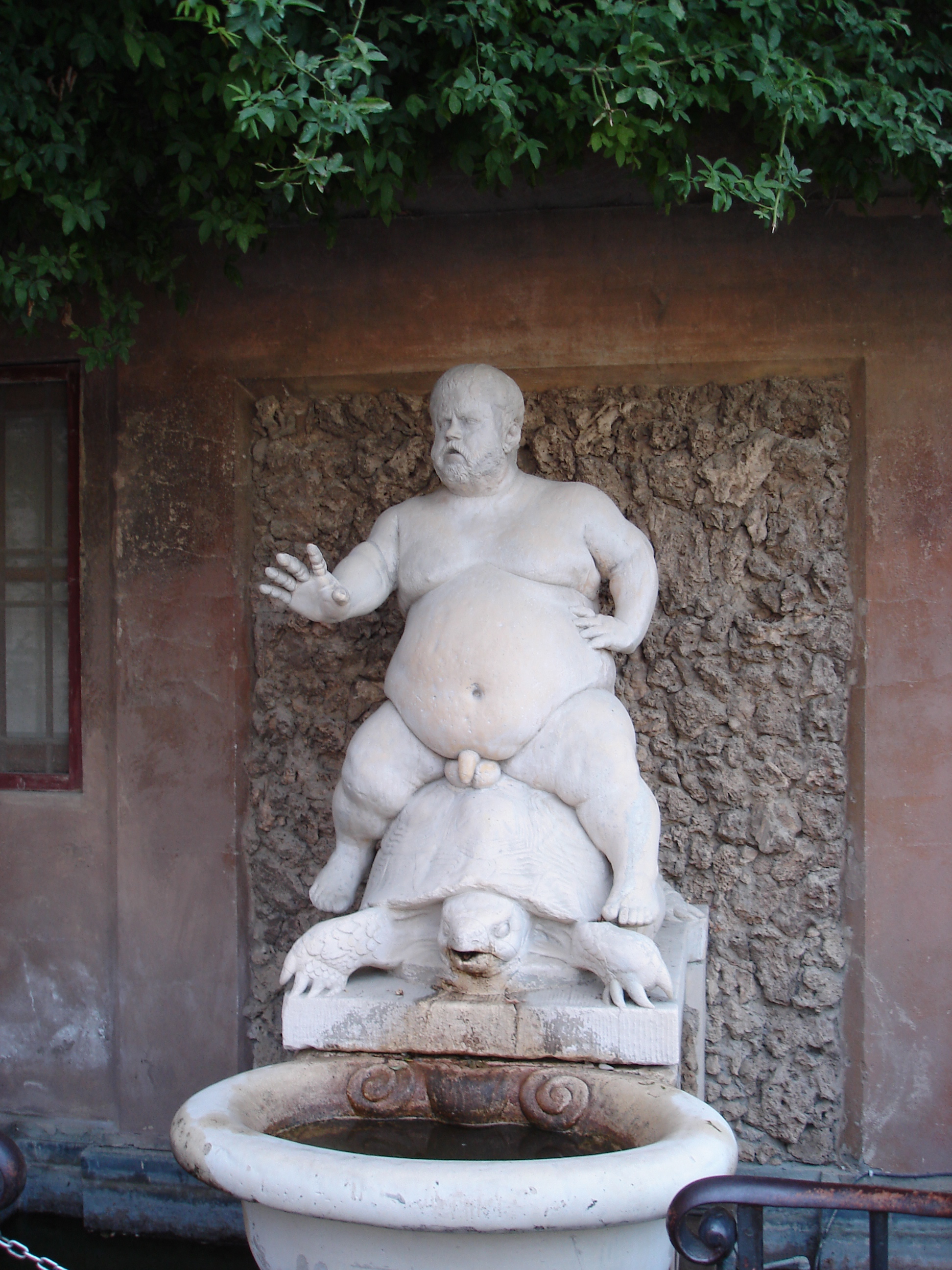 Equally famous is the Bacchino Fountain depicting the dwarf Morgante, jester at the court of Cosimo I de' Medici and beyond; born suffering from dwarfism, Morgante was a very intelligent and amiable man: Cosimo esteemed him so much that he chose him as his personal advisor, granting him many privileges.
Equally famous is the Bacchino Fountain depicting the dwarf Morgante, jester at the court of Cosimo I de' Medici and beyond; born suffering from dwarfism, Morgante was a very intelligent and amiable man: Cosimo esteemed him so much that he chose him as his personal advisor, granting him many privileges.
The white marble sculpture depicts him as a Bacchus riding a turtle with water flowing from his mouth; the work is by Valerio Cioli.
The Grotta del Buontalenti and La Kaffeehaus: more curiosities about the garden
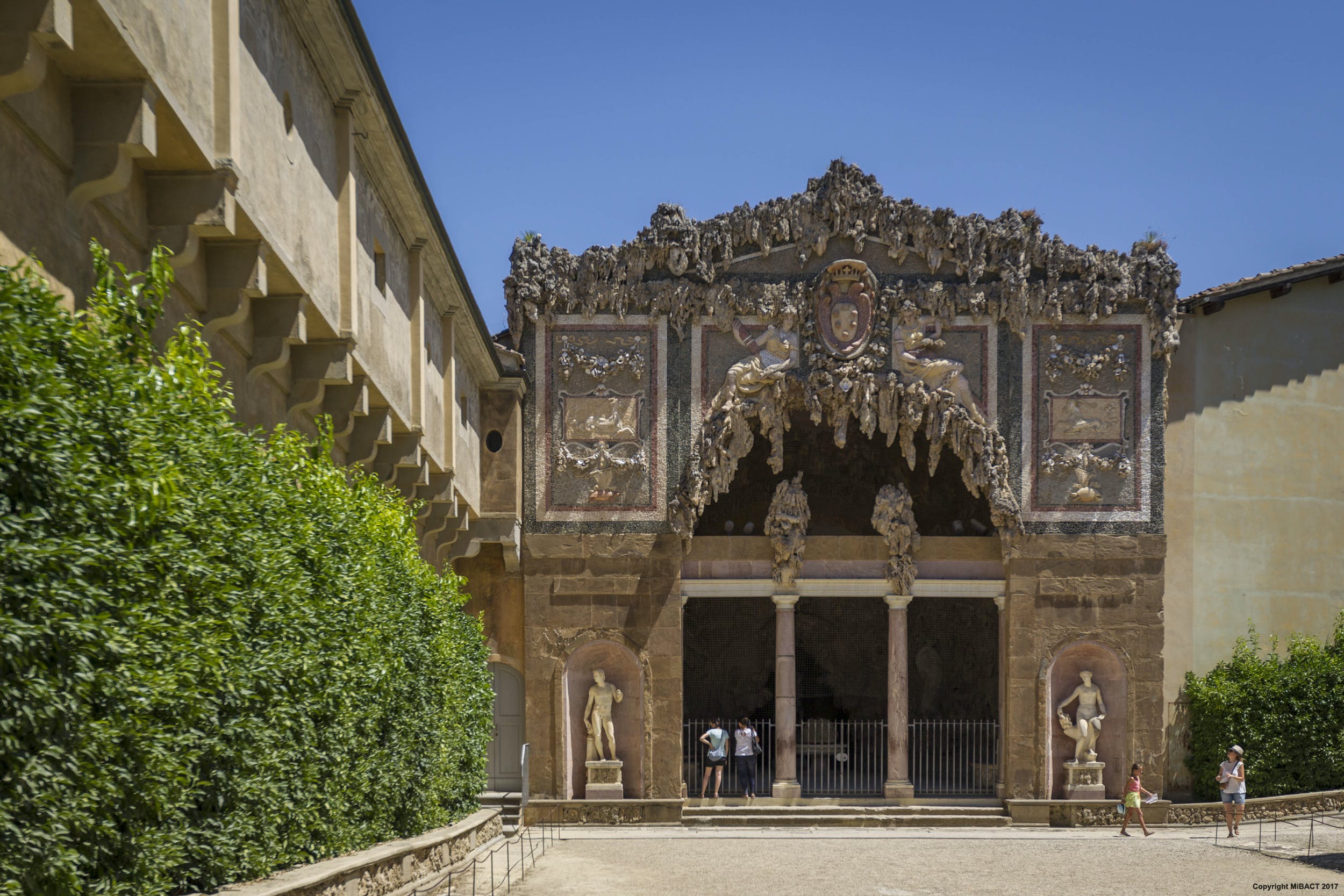
Telling other curiosities about the Boboli Garden, one cannot help but mention the Grotta del Buontalenti,a fake cave decorated in mannerist style,complete with stalactites and stalagmites. Looking closely at it you can see sheep and shepherds; in the corners there are copies of Michelangelo's Slaves, the originals of which are now in the Accademia Gallery. Gorgeous!
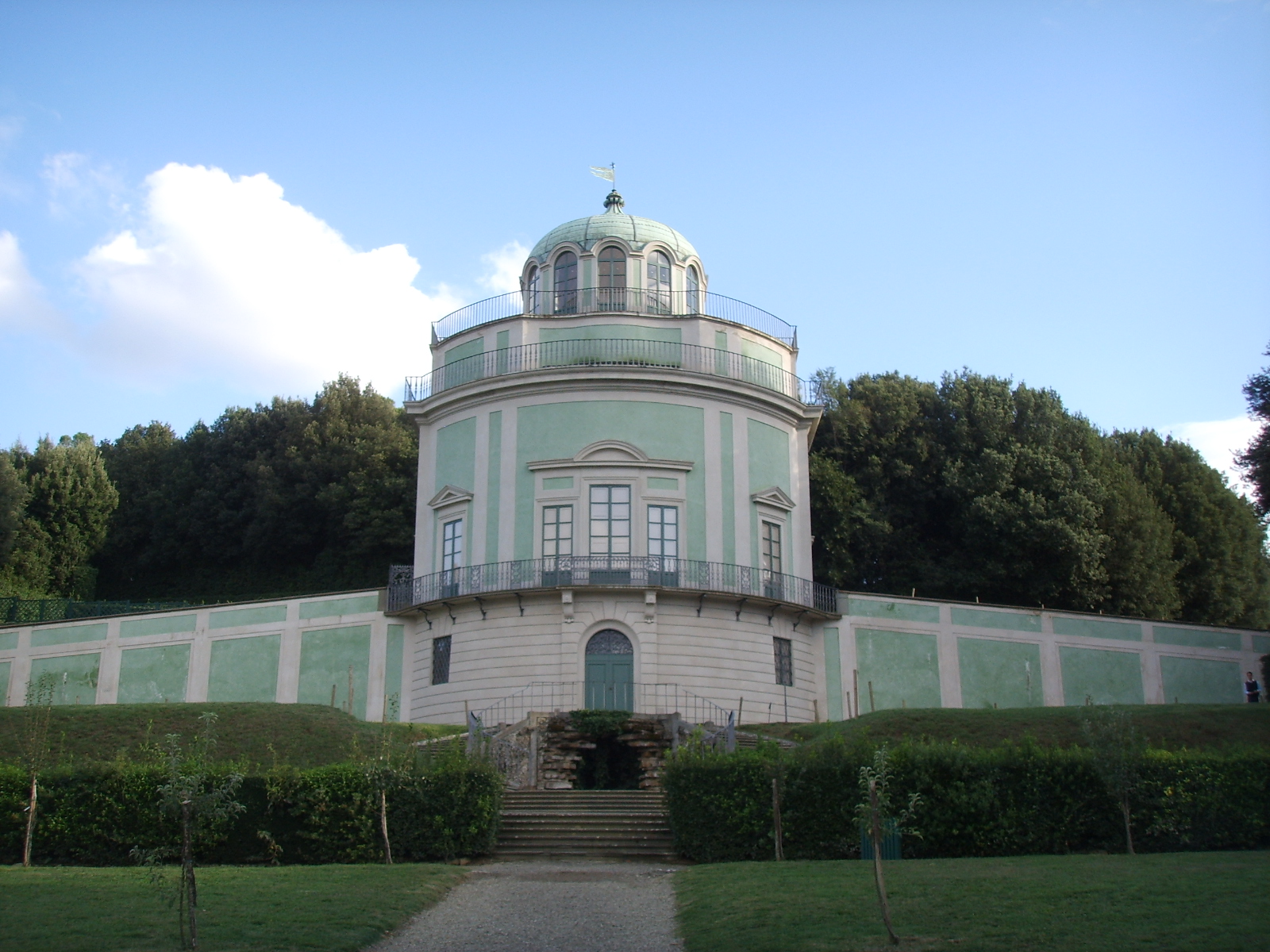
The Kaffeehaus is located at the end of the gardens and its terrace overlooks Florence. You might think his German name is strange, but it was commissioned by the palace's then owner, Grand Duke Peter Leopold of Austria, who later became Emperor Leopold II of the Austro-Hungarian Empire. Not far from the Kaffeehaus, we find the wonderful Fountain of Neptune by Stoldo Lorenzi (1565) surrounded by Tritons and Mermaids.
Continuing the walk to boboli garden
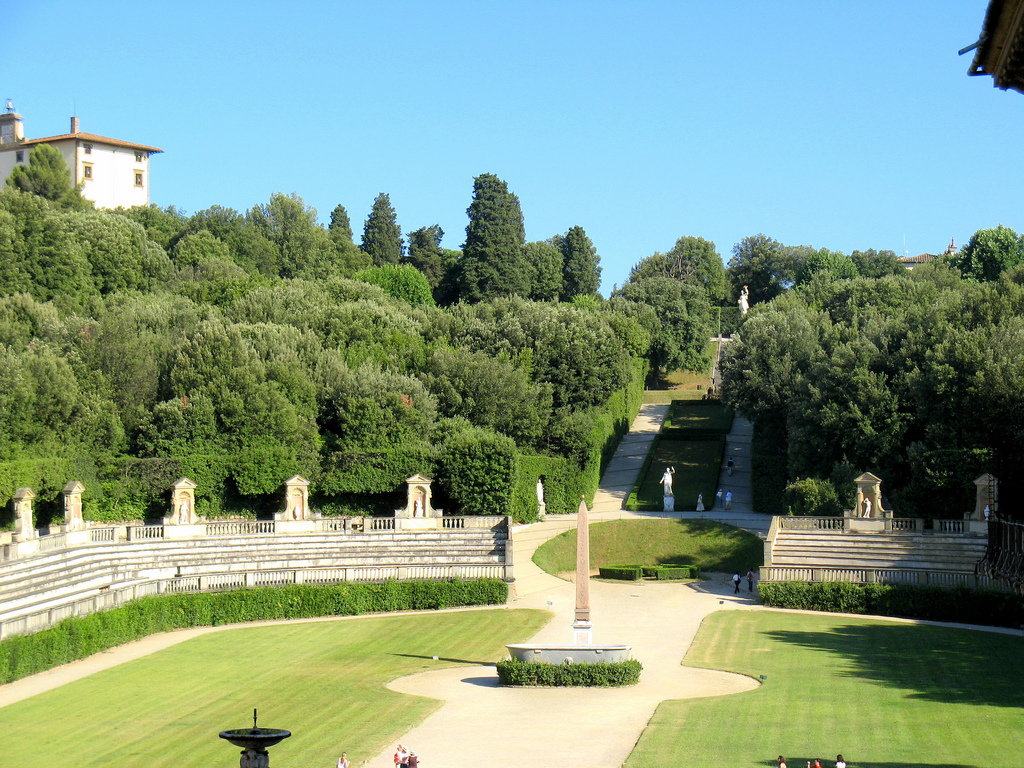
The Viottolone, which leads to the wide clearing below, creates a straight walk to the other end of the gardens: a suggestive path of high cypresses on both sides where chestnuts, oaks and maritime pines are located; the Viottolone leads downhill to piazzale dell'Isolotto (where the aforementioned Giambologna Ocean is located).
The Amphitheater was initially the quarry where the stone was cut to build Palazzo Pitti: later it was transformed into an amphitheater and used by the Grand Duke to stage shows.
Often rightly compared to those of Versailles, the Boboli Gardens offer an experience worthy of the most beautiful fairy tales (a bit like that of the Tarot Garden); everything inside them depicts the portrait of a place out of time,sublimated by precious works of art. We can't wait to come back and visit them!
image sources: wikipedia, mapio.net, novaradio.info, imuseidifirenze, uffizi










 Map
Map